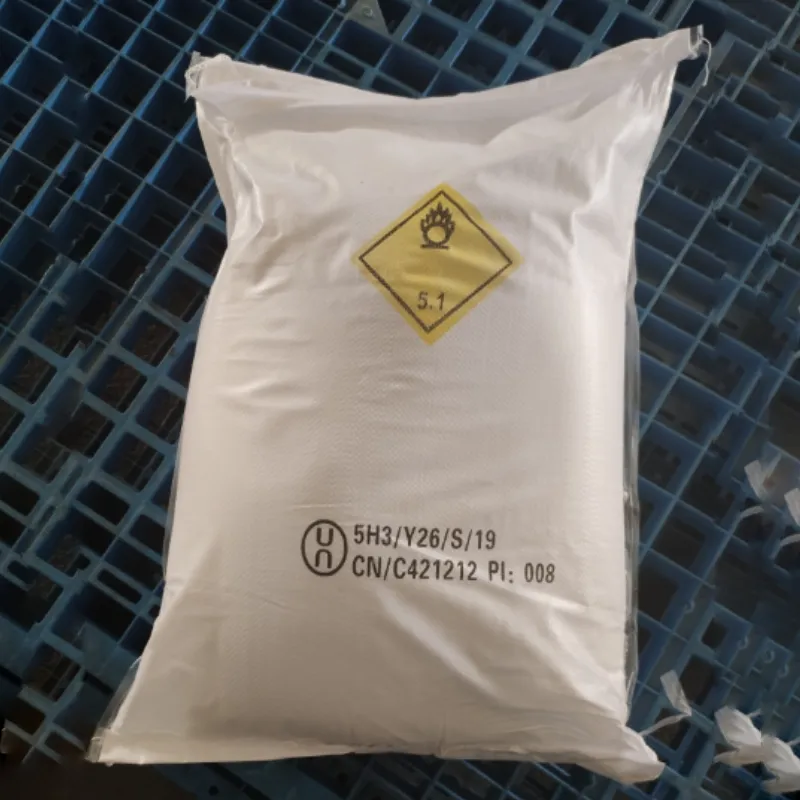
sodium metabisulfite in drinks
Understanding Sodium Metabisulfite in Beverages Safety and Use
Sodium metabisulfite, a chemical compound often recognized by its E number E223, is a widely used preservative in the food and beverage industry. This compound serves multiple roles, primarily as an antioxidant and a stabilizer. It is particularly common in beverages such as wines, fruit juices, and certain soft drinks. A deeper understanding of sodium metabisulfite, including its function, safety, and potential concerns, can help consumers make informed choices.
What is Sodium Metabisulfite?
Sodium metabisulfite is a white or yellowish crystalline powder with a strong sulfurous odor. It is derived from sulfur dioxide, a gas that, when introduced to a sodium hydroxide solution, forms sodium metabisulfite. The compound acts as a reducing agent, inhibiting oxidation, which is crucial for maintaining the freshness and stability of many beverages. By preventing oxidation, sodium metabisulfite helps in preserving color, flavor, and overall quality.
Uses in Beverages
In the beverage industry, sodium metabisulfite serves several purposes. In winemaking, it is commonly used to prevent the growth of unwanted microorganisms and to inhibit oxidation during the fermentation process. This practice allows winemakers to enhance and stabilize the wine's flavors. Similarly, in fruit juices, sodium metabisulfite helps maintain the vibrant color and fresh taste, thereby extending shelf life. Some soft drinks also utilize this compound, mainly for its antibacterial properties and ability to preserve flavor profiles.
Regulatory Approval and Safety
sodium metabisulfite in drinks

Sodium metabisulfite is recognized as safe by various health authorities, including the Food and Drug Administration (FDA) and the European Food Safety Authority (EFSA), provided it is used within established limits. In the European Union, the maximum allowable concentration for sodium metabisulfite in beverages is typically set at 200 mg per liter. These regulatory measures ensure that the use of sodium metabisulfite does not pose significant health risks to consumers.
Despite its safety approval, some individuals may experience allergic reactions to sulfites, including symptoms like headaches, respiratory issues, and other allergic responses. Sulfite sensitivity is particularly common among asthmatics, making it essential for manufacturers to label products containing sodium metabisulfite clearly. Consumers who are aware of their sensitivities should always check ingredient lists before consumption.
Consumer Awareness and Labeling
Due to rising health consciousness, many consumers are becoming increasingly curious about the ingredients in their food and beverages. It is important to note that while sodium metabisulfite is a useful agent for preserving quality, its presence in a beverage can spark concerns. As a result, there has been an ongoing debate surrounding the safety and necessity of sulfites in drinks.
Manufacturers are encouraged to provide transparent labeling to inform consumers about the ingredients of their products. In regions where labeling is mandatory, products containing sodium metabisulfite must disclose its presence. This transparency helps consumers make informed choices while allowing them to avoid products that may trigger allergic reactions.
Conclusion
Sodium metabisulfite plays an essential role in the preservation and stabilization of many beverages. Its functions as an antioxidant and antimicrobial agent contribute significantly to the quality and longevity of products like wine and fruit juices. While generally regarded as safe, consumers with sulfite sensitivities should stay vigilant and read labels carefully. As the beverage landscape continues to evolve, fostering an environment of transparency and informed choices will be paramount in addressing consumer concerns regarding additives like sodium metabisulfite. In summary, understanding the role and implications of sodium metabisulfite can empower consumers, enabling them to enjoy their favorite drinks without compromising their health.
-
Pure Sodium Dichloroisocyanurate Dihydrate | Powerful DisinfectantNewsAug.29,2025
-
Industrial Chemicals: Quality & Purity for Every IndustryNewsAug.28,2025
-
Nitrile Rubber Honoring Strict Production StandardsNewsAug.22,2025
-
Aspartame Ingredients Honoring Food Safety ValuesNewsAug.22,2025
-
Fertilizer for Balanced Plant NutritionNewsAug.22,2025
-
Cyanide Gold Processing with High Purity AdditivesNewsAug.22,2025
-
Formic Acid in Textile Dyeing ApplicationsNewsAug.22,2025
Hebei Tenger Chemical Technology Co., Ltd. focuses on the chemical industry and is committed to the export service of chemical raw materials.
-

view more DiethanolisopropanolamineIn the ever-growing field of chemical solutions, diethanolisopropanolamine (DEIPA) stands out as a versatile and important compound. Due to its unique chemical structure and properties, DEIPA is of interest to various industries including construction, personal care, and agriculture. -

view more TriisopropanolamineTriisopropanolamine (TIPA) alkanol amine substance, is a kind of alcohol amine compound with amino and alcohol hydroxyl, and because of its molecules contains both amino and hydroxyl. -

view more Tetramethyl Thiuram DisulfideTetramethyl thiuram disulfide, also known as TMTD, is a white to light-yellow powder with a distinct sulfur-like odor. It is soluble in organic solvents such as benzene, acetone, and ethyl acetate, making it highly versatile for use in different formulations. TMTD is known for its excellent vulcanization acceleration properties, which makes it a key ingredient in the production of rubber products. Additionally, it acts as an effective fungicide and bactericide, making it valuable in agricultural applications. Its high purity and stability ensure consistent performance, making it a preferred choice for manufacturers across various industries.





